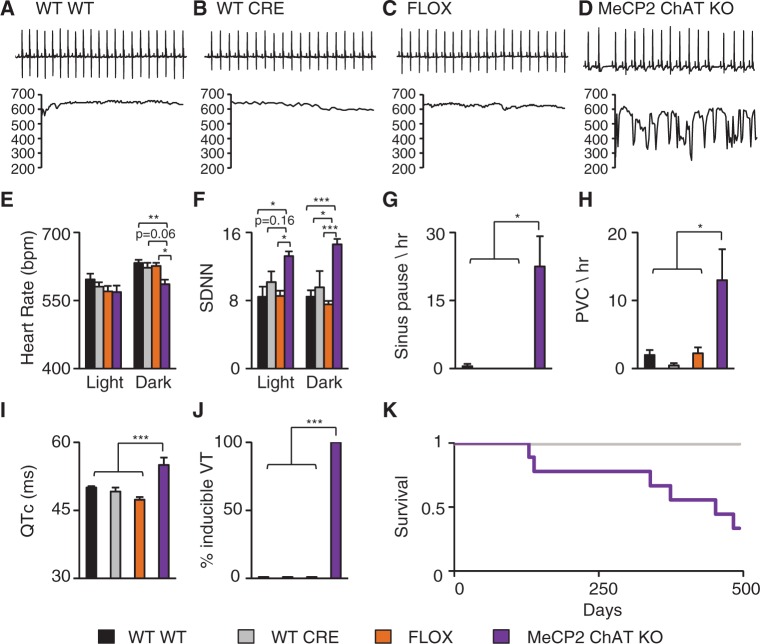Figure 5.
Loss of MeCP2 function in cholinergic neurons leads to cardiac abnormalities. Telemetry recordings were collected from WT (Mecp2+/Y; No Cre), CRE (Mecp2+/Y; ChAT-Cre), FLOX (Mecp2TM1Jae/Y; No Cre), and MeCP2 cholinergic neuron specific knock-out (MeCP2 ChAT KO, Mecp2TM1Jae/Y; ChAT-Cre) mice. Data from 24-h recording were binned into light and dark cycles and compared. (A-C) Representative 2s ECG trace from WT, CRE, and FLOX mice and corresponding 15s instantaneous heart rate showing a normal heart rate and stable pattern. (D) Representative 2s ECG trace from a MeCP2 ChAT KO mouse and corresponding 15s instantaneous heart rate showing an irregular heart rate. (E) MeCP2 ChAT KO mice showed decreased heart rate during the dark cycle. (F) MeCP2 ChAT KO mice had increased heart rate variability during the light and dark cycle. (G and H) MeCP2 ChAT KO mice display a high incidence of sinus pauses and PVCs per hour. MeCP2 ChAT KO had prolonged corrected QT interval (QTc) (I) and a high incidence of inducible arrhythmias (J). MeCP2 ChAT KO mice had reduced lifespan with a median survival of 14 months (K). No significant differences in activity were found. Data presented as mean ± SEM. *P < 0.05 **P < 0.01, ***P < 0.001. Telemetry: WT n = 4, CRE n = 3, FLOX n = 4, MeCP2 ChAT KO n = 4; ECG and PES: WT n = 5, CRE n = 4, FLOX n = 5, MeCP2 ChAT KO n = 6; Survival: WT n = 4, CRE n = 3, FLOX n = 9, MeCP2 ChAT KO n = 9.

